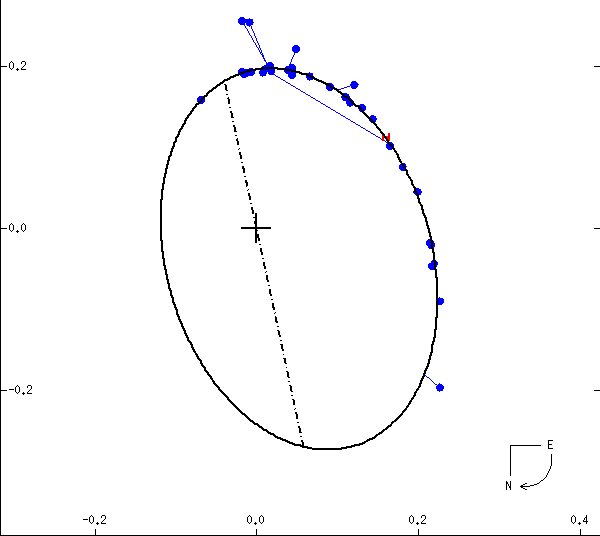
 |
Tau Tauri Ab closely orbits much brighter Tau Tau Aa (at the cross) with a period of 57.9 years, a semimajor axis (the dash-dot line) of 35 Astronomical Units, and an eccentricity of 0.36. Only 0.1 to 0.2 seconds of arc apart, they are studied by lunar occultation and interferometry. The stars have yet to orbit once since first observed. As time proceeds, the orbital parameters will be refined. In reality both stars orbit a common center of mass between them. The offsets of the true semimajor axis from that of the observed ellipse and Tau Tau Aa from the its focus are caused by the 49 degree tilt of the orbit against the plane of the sky and the orientation of the ellipse within the orbital plane. From the Sixth Catalog of Orbits of Visual Binary Stars , W. I. Hartkopf and B. D. Mason, US Naval Observatory Double Star Catalog, 2006. |